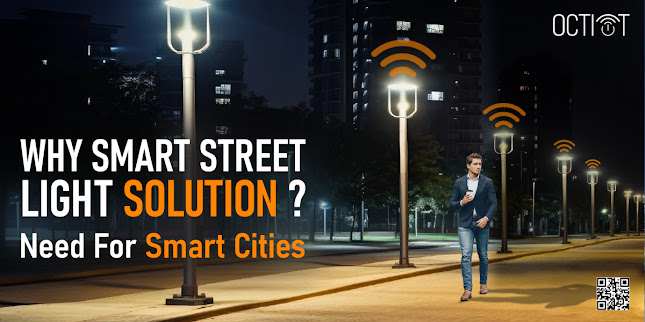The Role of True Presence Technology in Sustainable Building Design
As cities continue to grow and climate concerns mount, sustainable building design is no longer just an option — it’s a necessity. Architects, engineers, and building managers are looking for innovative technologies that minimise energy use, reduce environmental impact, and enhance occupant well-being. One of the most promising advancements in this space is True Presence Technology, developed and refined by TRUEiSENSE.
In this blog, we’ll explore how True Presence Technology plays a critical role in enabling more intelligent, efficient, and sustainable buildings.
What Is True Presence Technology?
Traditional building sensors — like passive infrared (PIR) or ultrasonic detectors — attempt to detect motion to infer occupancy. However, these legacy systems often result in false positives or negatives, causing lights to turn off while a person is still in a room or stay on unnecessarily.
True Presence Technology changes the game. Rather than detecting mere motion, it accurately identifies actual human presence, even if the person is sitting still. This is achieved through a combination of advanced sensors, data analytics, and machine learning algorithms. It not only detects if someone is present but also measures environmental factors like temperature, humidity, and CO₂ levels to create a truly responsive environment.
Challenges in Traditional Sustainable Building Approaches
While sustainable design has made great strides in areas like insulation, materials, and renewable energy integration, operational efficiency still lags. Common issues include:
- Inefficient energy use due to poor occupancy detection.
- Over-ventilation or under-ventilation affects both energy costs and indoor air quality.
- Manual system overrides, where user behaviour unintentionally increases energy consumption.
- Inadequate data for optimising space utilisation or making informed facility upgrades.
These limitations point to the need for more precise, real-time systems — enter True Presence Technology.
How True Presence Technology Drives Sustainability
1. Energy Efficiency through Intelligent Automation
The most direct impact of True Presence Sensor is reduced energy waste. Lighting, HVAC, and even plug loads can be automated to activate only when a room is genuinely occupied.
For example, in an office environment, lights and heating are often scheduled to run from 8 AM to 6 PM, regardless of actual usage. True Presence Technology allows for on-demand activation, significantly cutting down on unnecessary energy use during unoccupied hours or weekends.
2. Optimized Space Utilization
Modern workspaces, educational campuses, and healthcare facilities are often underutilised. True Presence provides real-time occupancy analytics that help building managers:
- Reassign or redesign underused spaces.
- Plan cleaning and maintenance more efficiently.
- Improve the scheduling of shared resources like meeting rooms.
The result is a smarter allocation of square footage, contributing to both operational and environmental sustainability.
3. Healthier Indoor Environments
Sustainability isn’t just about the environment — it’s also about people. True Presence Technology integrates with air quality monitoring to ensure ventilation systems adjust based on actual usage and CO₂ concentration levels.
This not only conserves energy by avoiding constant over-ventilation but also promotes better indoor air quality (IAQ), which has been linked to increased productivity, reduced sick days, and enhanced overall well-being.
4. Data-Driven Behavioural Insights
Every building is unique in how people use it. True Presence sensors provide granular data on how occupants move through and use spaces. Over time, this data can reveal trends and allow facility managers to:
- Predict usage patterns.
- Adjust lighting, temperature, and airflow preemptively.
- Set benchmarks and goals for continuous improvement.
This type of adaptive intelligence is crucial for buildings aspiring to be truly smart and sustainable.
Real-World Applications: Case Studies from TRUEiSENSE
TRUEiSENSE has implemented True Presence Technology in a range of commercial and institutional buildings with measurable success. For instance:
- A corporate headquarters reduced energy consumption by 30% within six months by shifting to presence-based lighting and HVAC.
- A university campus used occupancy analytics to reassign classrooms and reduce total open hours, leading to a 20% drop in energy bills.
- A healthcare facility improved patient comfort while cutting down on CO₂ emissions by optimising its ventilation strategy.
These results demonstrate how True Presence doesn’t just support sustainability in theory — it delivers it in practice.
The Future of Smart Sustainability
The future of sustainable building design lies in the integration of technologies like True Presence with broader smart building and IoT platforms. As AI capabilities expand, buildings will not only respond to their occupants — they’ll anticipate their needs.
Upcoming developments could include:
- Predictive climate control based on user habits.
- Seamless integration with mobile apps and wearables.
- Dynamic building system orchestration for entire campuses or city blocks.
Conclusion
Sustainable building design demands more than energy-efficient hardware or green materials — it requires intelligent, responsive systems that optimize how buildings operate in real-time. True Presence Technology by TRUEiSENSE provides that crucial intelligence, helping buildings reduce energy, enhance occupant well-being, and support long-term sustainability goals.
Whether you’re an architect, facilities manager, or sustainability officer, incorporating True Presence into your building strategy isn’t just smart — it’s essential for the future.
.png)


Comments
Post a Comment